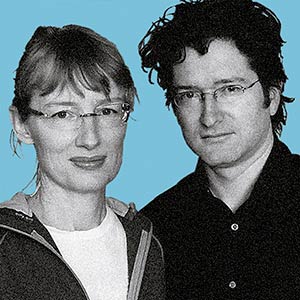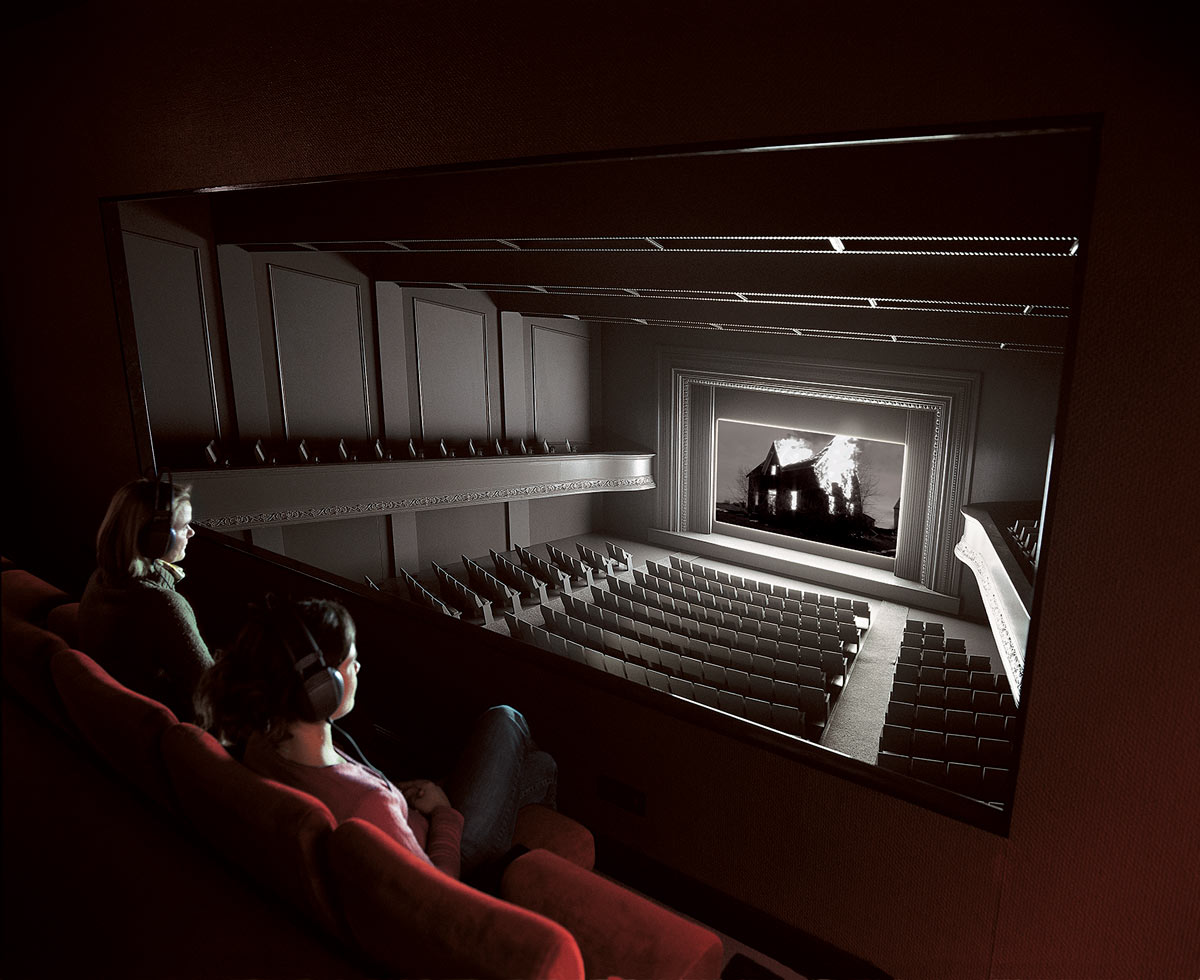2003
JANET CARDIFF Born 1957 in Brussels, ON Grindrod, BC
GEORGE BURES MILLER Born 1960 in Vegreville, AB

JANET CARDIFF Born 1957 in Brussels, ON Grindrod, BC
GEORGE BURES MILLER Born 1960 in Vegreville, AB
They create poetic, ambiguous, and fractured narratives… making reference in their works to the world of film, theatre, and spectacle, as well as to the ways in which technology affects our consciousness.
I first met Janet Cardiff and George Bures Miller in 1991, when they were still living in Lethbridge, a small city on the plains of Alberta. Janet was teaching at the university there, and together they were collaborating on various projects, while pursuing individual careers. They exhibited regularly in modest artist-run spaces across Canada, and occasionally one of them showed in a museum. Even at this early date, I was struck by the ways in which their work was focused on theatrical scenarios, an innovative and sophisticated use of sound, technology and image—both moving and still—and the implicated body and mind of the spectator. Works such as Whispering Room (1991), Conversation/Interrogation (1991), and To Touch (1993) are all typical of this period.
Cardiff’s and Miller’s lives changed when they exhibited the audio walk Louisiana Walk No. 14 (1996) in curator Bruce Ferguson’s exhibition, Thinking and Walking and Thinking (1996) at the Louisiana Museum of Modern Art, Denmark. This walk made such an impression on Kasper König that he included them the following year in the prestigious Skulptur Projekte Münster (1997). Since that time Cardiff and Miller have gone on to make exceptional works in the form of both walks and installations; some of the best known are The Missing Voice: Case Study B (1999), The Paradise Institute (2001), The Forty Part Motet (2001), and, more recently, Opera for a Small Room (2005), The Killing Machine (2007), and The Murder of Crows (2008). Carolyn Christov-Bakargiev best describes the experience of these works: It has shifted our attention away from art as a primarily visual experience and an experience of the here and now (art as a specific object), to art as a multi-sensorial experience, where sound sculpts space, and memory and reverie play an essential role: we are paradoxically transported away from the here and now, in order to achieve a heightened awareness of our bodies and being in the here and now. They create poetic, ambiguous, and fractured narratives that investigate desire, intimacy, love, loss, and memory, making reference in their works to the world of film, theatre, and spectacle, as well as to the ways in which technology affects our consciousness.
Over the past decade, Cardiff’s and Miller’s work has been exhibited in significant venues throughout the world, including the Museum of Modern Art, New York; Tate Modern, London; Castello di Rivoli, Turin; Astrup Fearnley Museum of Modern Art, Oslo; and the National Gallery of Canada, Ottawa. They have been included in numerous seminal exhibitions, as well as all of the major biennials. Their work is represented in major international collections (both public and private) and has been the subject of numerous books and catalogues.
In 2000, Cardiff was awarded the DAAD Grant and Residency in Berlin, Germany. In 2001, curator Wayne Baerwaldt organized The Paradise Institute for the Canadian Pavilion at the 49th Venice Biennale, for which the artists received La Biennale di Venezia Special Award and The Benesse Prize. Earlier in the year, they had been awarded the National Gallery of Canada’s Millennium Prize in connection with Diana Nemiroff’s exhibition Elusive Paradise. By 2003, Cardiff and Miller were natural choices for recognition by the Gershon Iskowitz Prize. The jury easily came to a unanimous decision to acknowledge the remarkable achievements of these two Canadian artists.
Kitty Scott
Marc Gotlieb
Margaret Priest
Kitty Scott
Stephen Smart
Jay Smith

The Paradise Institute, 2001
All images courtesy the artists, Galerie Barbara Weiss, Berlin, and Luhring Augustine, New York
The information is current to the date when the artist received the Prize; for current information, please see the artist’s and/or gallery’s website.